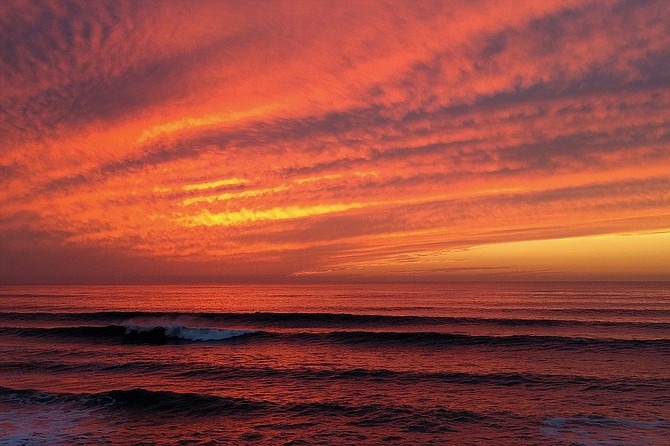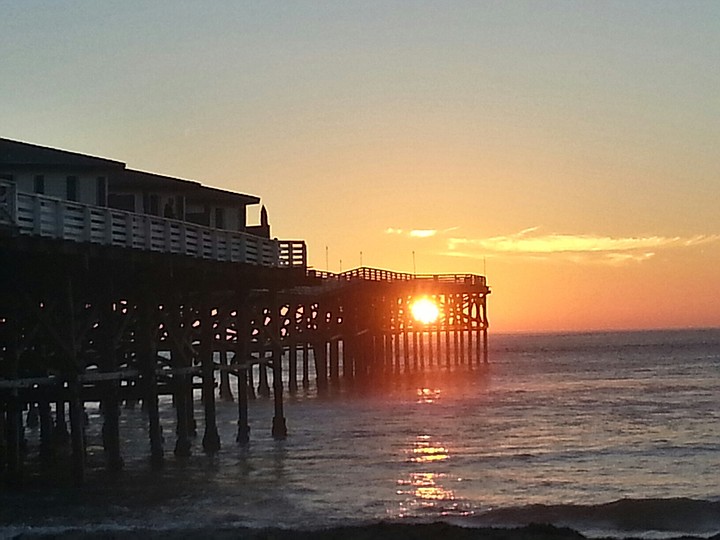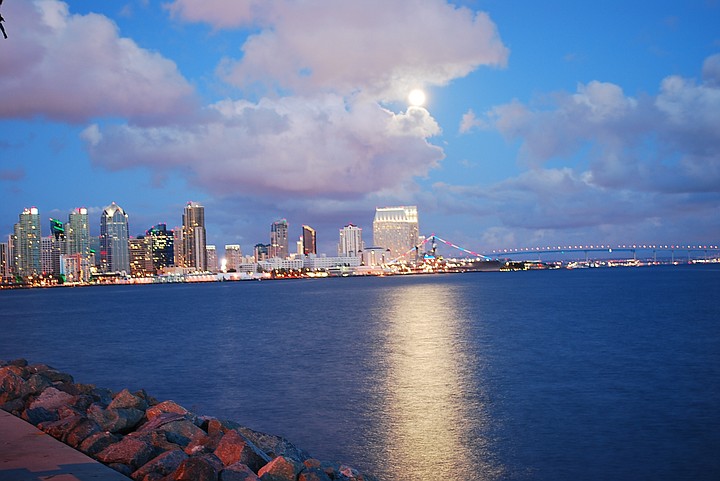 Facebook
Facebook
 X
X
 Instagram
Instagram
 TikTok
TikTok
 Youtube
Youtube

San Diego’s Earliest Sunset (4:42 pm) Occurs December 3, a date that does not coincide with the shortest day (winter solstice – December 21) because of factors relating to the non-circular shape of Earth’s orbit around the sun and the tilt of Earth’s rotational axis. (Because of the elliptical orbit of the earth, when the earth is closer to the sun, its orbit is quicker. Because of the rotational axis of the earth, a solstice occurs when one of the poles is leaning towards the sun, while an equinox occurs when neither pole is leaning towards the sun. Our clocks are set so that every day is exactly 86,400 seconds, but in reality, the solar day can be up to 22 seconds shorter or 29 seconds longer than 24 hours.) Early December is a good time to view the setting sun from the spectacular vantage point of Cabrillo National Monument at the tip of Point Loma. During most of the year, you can’t do that, since sunset occurs well after the park’s closing time of 5 pm.

The Fabled “Green Flash” at sunset or sunrise can sometimes be seen on crystal-clear days in December and January. At the instant the sun’s upper rim is last visible at sunset, and also at the instant when it is first seen at sunrise, a flash of emerald-green color may be observed, especially on a flat horizon. Physicists explain this peculiar phenomenon as due to color-dispersion (as in a prism) and scattering of sunlight through the earth’s atmosphere.Binoculars (or a small telescope) are helpful in spotting it. For green flash hunting at sunset, any site with a view of the ocean horizon suffices. For the sunrise green flash, any spot overlooking the low desert (Sunrise Highway in the Laguna Mountains, for example) is good.

On Tuesday night the moon will rise just about as far north on the celestial sphere as you can ever possibly see it. The moon is at the northernmost part of the ecliptic, at the Gemini-Taurus border. As twilight fades, notice where the moon comes up over the horizon. You’ve probably never seen it rise that far north and you might never again, at least when it’s this close to full. On Tuesday evening the moon stands 4.3° north of the ecliptic itself. Less than 1° from the its greatest possible ecliptic divergence; its orbit is inclined to the ecliptic by 5.14°. That farthest-north side of the moon’s orbit precesses westward around the entire ecliptic with a period of 18.6 years. Everything lines up on Tuesday night; this year the almost-full moon rises where the north edges of both tilts nearly coincide.


San Diego’s Earliest Sunset (4:42 pm) Occurs December 3, a date that does not coincide with the shortest day (winter solstice – December 21) because of factors relating to the non-circular shape of Earth’s orbit around the sun and the tilt of Earth’s rotational axis. (Because of the elliptical orbit of the earth, when the earth is closer to the sun, its orbit is quicker. Because of the rotational axis of the earth, a solstice occurs when one of the poles is leaning towards the sun, while an equinox occurs when neither pole is leaning towards the sun. Our clocks are set so that every day is exactly 86,400 seconds, but in reality, the solar day can be up to 22 seconds shorter or 29 seconds longer than 24 hours.) Early December is a good time to view the setting sun from the spectacular vantage point of Cabrillo National Monument at the tip of Point Loma. During most of the year, you can’t do that, since sunset occurs well after the park’s closing time of 5 pm.

The Fabled “Green Flash” at sunset or sunrise can sometimes be seen on crystal-clear days in December and January. At the instant the sun’s upper rim is last visible at sunset, and also at the instant when it is first seen at sunrise, a flash of emerald-green color may be observed, especially on a flat horizon. Physicists explain this peculiar phenomenon as due to color-dispersion (as in a prism) and scattering of sunlight through the earth’s atmosphere.Binoculars (or a small telescope) are helpful in spotting it. For green flash hunting at sunset, any site with a view of the ocean horizon suffices. For the sunrise green flash, any spot overlooking the low desert (Sunrise Highway in the Laguna Mountains, for example) is good.

On Tuesday night the moon will rise just about as far north on the celestial sphere as you can ever possibly see it. The moon is at the northernmost part of the ecliptic, at the Gemini-Taurus border. As twilight fades, notice where the moon comes up over the horizon. You’ve probably never seen it rise that far north and you might never again, at least when it’s this close to full. On Tuesday evening the moon stands 4.3° north of the ecliptic itself. Less than 1° from the its greatest possible ecliptic divergence; its orbit is inclined to the ecliptic by 5.14°. That farthest-north side of the moon’s orbit precesses westward around the entire ecliptic with a period of 18.6 years. Everything lines up on Tuesday night; this year the almost-full moon rises where the north edges of both tilts nearly coincide.
Comments